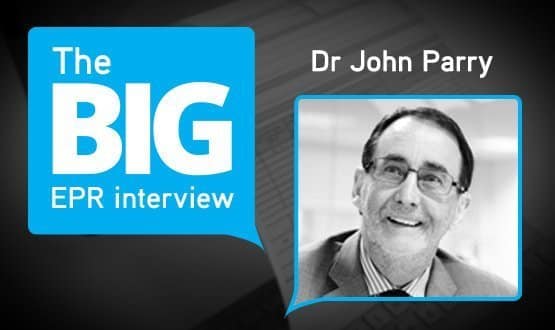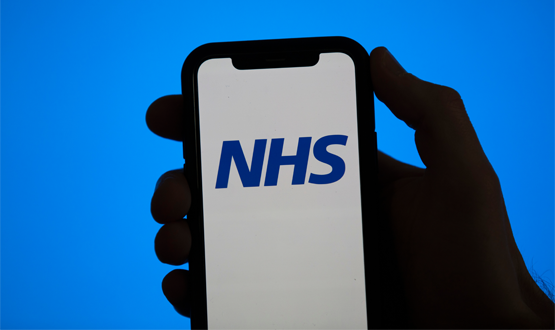The Big EPR Interview: Dr John Parry
- 29 May 2013

Dr John Parry says NHS England has a “huge” task ahead of it, as it prepares to issue guidance to trusts on using electronic records and, eventually, going ‘paperless.’
Yet the clinical director of TPP detects “a very refreshing approach to engagement with broader NHS” that also shows up in a willingness to talk to suppliers and “people who have experience in this field.”
“It’s frustratingly slow at times, but that’s because they have got so much else to do,” he says. “They are making tremendous effort and there’s a breath of fresh air entering into the environment because of the willingness to engage.”
More efficient silos are not the answer
Implicitly, Dr Parry is comparing the present push to get EPRs into the health service – and into the acute sector in particular – with the approach taken by the National Programme for IT in the NHS.
When it was placing its big contracts for ‘strategic’ systems a decade ago, it had little time for the views of “people with experience in this field” if they were, for example, GPs; even though GPs were already making strides towards paperless working in their practices.
Dr Parry qualified as a doctor in 1980 and has been a GP for more than quarter of a century. He has held IT posts with health authorities, primary care trusts and, most recently, an emerging clinical commissioning group.
From these vantage points, he has seen IT strategies and grand IT programmes come and go. The trick the commissioning board will need to pull off this time, he argues, is to tie IT into the wider NHS quality and financial agenda.
“NHS England has to take a central role in promoting the best practice that ties into this bigger envelope of transformative care and efficient care,” he says. “If we introduce a silo system we will have more brilliant, efficient silos and not be able to transform care.”
Taking a broader view
Dr Parry has been clinical director at TPP for seven years. The company has a particularly interesting take on how to get EPRs implemented and used in the health service, because it has grown out of the GP sector.
Its SystmOne software is now widely used by other services, such as community trusts, and it is involved in an increasing number of information sharing projects.
Last November, it was also able to announce that Airedale NHS Foundation Trust had gone live with its acute functionality, with data hosted by CSC.
Health secretary Jeremy Hunt, who said he wanted to see a ‘paperless’ NHS by 2018 in a speech in January, has been to see what Airedale has achieved.
NHS England is now tasked with producing guidance for other trusts on how to use electronic records. Trusts will be expected to have plans in place by April that they can action over the following year.
In a response to The Big EPR Debate that EHI is running to source views on what that guidance should – and, crucially, should not do – TPP wrote that it should “set achievable outcomes that will bring about measurable results.”
“The method of delivery should not be specified – it’s up to the trust and their chosen supplier to decide this,” it added. “We’ve learnt from our experience that there is no ‘one size fits all’ project plan.”
Start with the basics
On the other hand, the company stressed that “hospital trusts need to ensure they have the basics in place before trying to achieve a completely paperless vision.”
Therefore, it suggested: “The first priority is to ensure there is the infrastructure to provide a centralised view of information from various systems, available via one log-on.
“To start with, this view may just show some essentials such as demographics, prescribed drugs and allergies. The view can then be built on to include other data items, safer prescribing across a hospital, and the ability to record notes.”
In other words, and in contrast to those companies advocating a big, ‘single supplier’ installation of new systems, TPP is in favour of a ‘best of breed’ approach, as long as it puts a significant emphasis on making systems interoperable from the outset.
Build up and out
TPP’s response went on to argue that trusts should build on the basics; keeping the need to drive out paper to deliver clinical and business benefits firmly in mind.
“The next step is to begin to accept feeds of data from all care services, leading to a longitudinal view of the patient journey across every service they may access,” it argued.
“This integrated ‘view’ of the data can then be fed into a functioning, writeable EPR for clinical use. In the medium term, e-prescribing directly into the EPR becomes a more achievable concept.
“An integrated record will allow clinicians to check for medicines interactions, allergies and sensitivities. In the longer term, full resource scheduling and integrated care pathways become the goal.”
Interestingly, bearing its GP and community background in mind, it also argued that trusts will need to recognise that those clinical and business benefits will increasingly need to be shared across healthcare communities, and demonstrated to commissioners.
“The next priority will be to ensure, following the Caldicott2 [information governance] principles, that communication channels are established across all care services.
“This will enable questions and answers to flow in both directions – allowing clinicians to query the information that’s in front of them, for better clinical decision making.
"Step three will provide a collated view of data across all services, a bi-directional communication tool and the ability to perform decision support.”
Retain the focus on outcomes
This idea of steadily building up a set of deliverables will be familiar to those who have read the IT strategies produced in the 1990s, before NPfIT.
They still have considerable resonance for many in the healthcare IT community. A strong finding from The Big EPR Survey that EHI ran as part of The Big EPR Debate is that many would like them to be rebooted in the form of a roadmap or roadmaps for trusts at different stages of IT development.
However, while TPP has a very clear view of how trusts should approach their EPR development, Dr Parry is sceptical about a national roadmap because trusts are so different in scale, operation, and starting point.
“Trusts need to be given a mandated outcome approach,” he reiterates. “I’m not altogether sure that you can give them a roadmap. If we have a rigorously applied outcome with deadlines and some suitable drivers to make this happen, then I think that’s the way forward."
Dr Parry also reiterates that while the acute sector may have furthest to go, it cannot be considered in isolation. “Healthcare economies need to work together to get the best outcomes for patients,” he says.
“The aim is for patients to be able to move seamlessly between primary care and secondary care and back again, with clinicians able to ‘keep their eye on the journey’.”
In the new NHS created by the ‘Liberating the NHS’ reforms, he adds, there will be new drivers for trusts to do this. For instance, effective technology can be used to reduce length of stay and prevent patients bouncing back into hospital; a key aim of clinical commissioners.
When some trusts adopt new ways of working, laggard trusts will “stick out like a sore thumb” to clinical commissioning groups, he argues.
Cost should not be the issue
Dr Parry argues that the necessary software can be produced at a reasonable cost and the NHS needs to build up its ability to deploy IT, instead of spending millions on consultancy fees.
“There’s a huge change management thing that’s got to be done and also the whole deployment; but I’m not interested in making money out of either of those two.
"We are a software company and we relish it when people can use our software to transform care,” he says.

EHI is running The Big EPR Debate to give readers a chance to shape the future of electronic records and a paperless NHS. What should NHS England’s guidance cover? What is an EPR? What is essential and what can be left for later? What should the next steps be. Join the debate.




